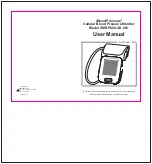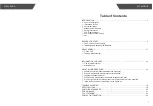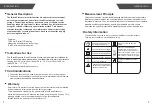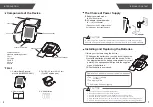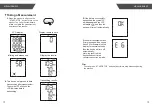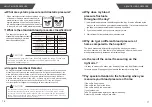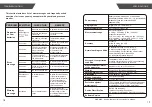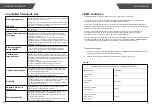
21
20
Complied Standards List
EN ISO 14971:2012 / ISO 14971:2007 Medical devices - Application of
risk management to medical devices
EN 60601-1:2006+A1:2013/ IEC 60601-1:2005+A1:2012 Medical
electrical equipment - Part 1: General requirements for basic safety
and essential performance
EN 60601-1-11:2015/ IEC 60601-1-11:2015 Medical electrical
equipment - Part 1-11: General requirements for basic safety and
essential performance - Collateral standard: Requirements for medical
electrical equipment and medical electrical systems used in the home
healthcare environment
EN 60601-1-2:2015/ IEC 60601-1-2:2014 Medical electrical equipment
- Part 1-2: General requirements for basic safety and essential
performance - Collateral standard: Electromagnetic disturbances -
Requirements and tests
EN ISO 81060-1:2012 Non-invasive sphygmomanometers - Part 1:
Requirements and test methods for non-automated measurement type
EN 1060-3:1997+A2:2009 Non-invasive sphygmomanometers - Part 3:
Supplementary requirements for electro-mechanical blood pressure
measuring systems
EN 60601-1-6:2010+A1:2015/IEC 60601-1-6:2010+A1:2013 Medical
electrical equipment - Part 1-6: General requirements for basic safety
and essential performance - Collateral standard: Usability
IEC 62366-1:2015 Medical devices - Part 1: Application of usability
engineering to medical devices
EN 62304:2006/AC: 2008 / IEC 62304: 2006+A1:2015 Medical
device software - Software life-cycle processes
Risk management
Labeling
User manual
General Requirements
for Safety
Electromagnetic
compatibility
Performance
requirements
Clinical investigation
Usability
Software life-cycle
processes
Bio-compatibility
ISO 10993-1:2009 Biological evaluation of medical devices- Part 1:
Evaluation and testing within a risk management process
ISO 10993-5:2009 Biological evaluation of medical devices - Part 5:
Tests for in vitro cytotoxicity
ISO 10993-10:2010 Biological evaluation of medical devices - Part
10: Tests for irritation and skin sensitization
EN ISO 15223-1:2016 / ISO 15223-1:2016 Medical devices. Symbols
to be used with medical device labels, labelling and information to be
supplied. Part 1 : General requirements
IEC 80601-2-30:2018 Medical electrical equipment- Part 2-30:
Particular requirements for the basic safety and essential
performance of automated non-invasive sphygmomanometers
EN 1060-4:2004 Non-invasive sphygmomanometers - Part 4: Test
procedures to determine the overall system accuracy of automated
non-invasive sphygmomanometers
ISO 81060-2:2018 Non-invasive sphygmomanometers - Part 2:
Clinical validation of automated measurement type
EMC GUIDANCE
COMPLIED STANDARDS
EMC Guidance
The ME EQUIPMENT or ME SYSTEM is suitable for home healthcare environments
Warning: Do not use near active HF surgical equipment and the RF shielded room of an ME system for
magnetic resonance imaging, where the intensity of EM disturbances is high.
Warning: Use of this equipment adjacent to or stacked with other equipment should be avoided because it
could result in improper operation. If such use is necessary, this equipment and the other equipment should be
observed to verify that they are operating normally.
Warning: Use of accessories, transducers and cables other than those specified or provided by the
manufacturer of this equipment could result in increased electromagnetic emissions or decreased
electromagnetic immunity of this equipment and result in improper operation.
Warning: Portable RF communications equipment (including peripherals such as antenna cables and external
antennas) should be used no closer than 30 cm (12 inches) to any part of the equipment SMBP802-GS-001,
including cables. Otherwise, degradation of the performance of this equipment could result.
Technical description
:
1
,
All necessary instructions for maintaining BASIC SAFETY and ESSENTIAL PERFORMANCE with regard
to electromagnetic disturbances for the excepted service life.
2
,
Guidance and manufacturer’s declaration -electromagnetic emissions and immunity
Table 1
Guidance and manufacturer’s declaration - electromagnetic emissions
RF emissions
CISPR 11
Group 1
Class [ B ]
Class A
Comply
Compliance
Harmonic emissions
IEC 61000-3-2
Voltage fluctuations/
flicker emissions
IEC 61000-3-3
RF emissions
CISPR 11
Emissions test
EN 1041:2008 +A1:2013 Information supplied by the manufacturer of
medical devices

